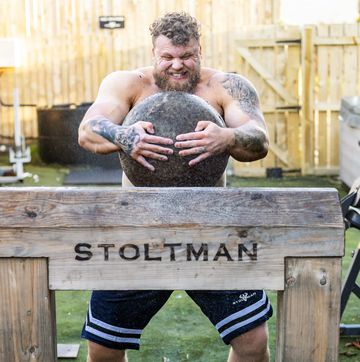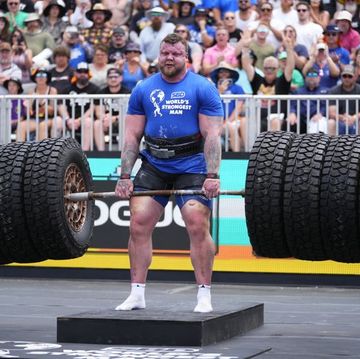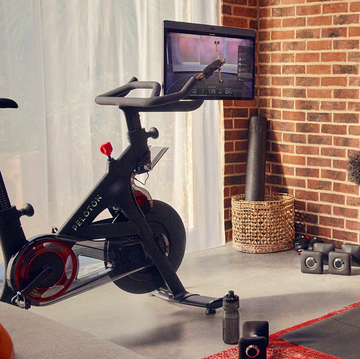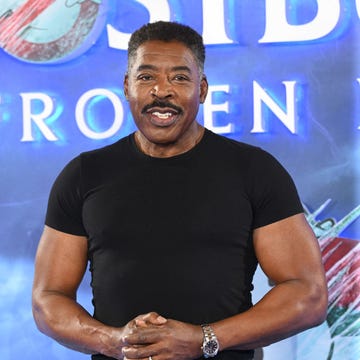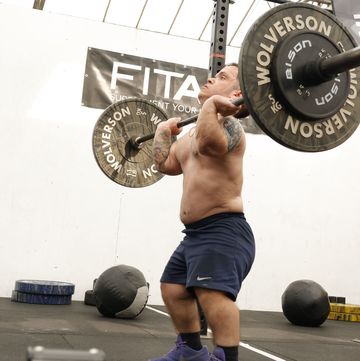The tale that inspired Shakespeare’s Hamlet, based on an old Norse legend, sees Skarsgård in his most muscle-heavy form yet, as he hacks and slashes his way through the film sporting little more than a wolf’s head and a look of steely determination.
To prepare for the role, Skarsgård worked with Magnus Lygdbäck, the trainer behind that Tarzan body. Below, Lygdbäck shares his Viking-building secrets.
Building 'The Northman'
The pair, good friends since their time together filming The Legend of Tarzan, started by building a picture of how the character would look and move. “His spirit animals in the movie are the wolf and the bear” Lygdbäck explains. “We wanted to build that into the character so he’s wolf-like in the way he moves and fights – but has a pure strength and impressive look of a bear”.
Bear-like, he is. This is the most imposing we’ve seen Skarsgård in any movie to date. While Tarzan, Lygdbäck admits, was all about the six-pack, the vision with Amleth was to build an authentic warrior.
“We wanted something more impressive, a little thicker”, Lygdbäck explains. “We didn’t care about body fat as much - it’s possible that back in the day Vikings ran around with big bellies – but not our Viking!”
There were also practical elements to consider. Skarsgård spends much of the film wielding an axe, which translates into hours on set undertaking intense shoulder work. “We needed to take that into consideration and really prep his shoulders for that”, Lygdbäck explains.
Norse Code
The programme Lygdbäck created broke down into three phases. Beginning with the 'build-up' phase, Skarsgård ate a calorie surplus and focused all training on building muscle mass. “The build-up phase was a long one”, reflects Lygdbäck. Unsurprising given the volume of muscle the pair needed to create.
This was followed by Skarsgård's “diet phase”. “Here, you try to maintain as much muscle mass as possible but lose all the body fat. We only did three weeks of this because he didn’t need to cut that much. He doesn’t gain much body fat naturally”.
The final piece was about focusing on maintenance, something Lygdbäck describes as “absolutely the hardest phase”. “You’re already there,” he explains. “You have low body fat and high muscle mass and you have to maintain that while filming and doing all this crazy stuff all day”.
The other major challenge – rarely spoken about in this kind of training – is avoiding injury, something that Lygdbäck places a huge emphasis on. “Building someone’s physique is the easy part. Keeping someone injury-free for a year, that’s the real objective” he explains. Simply, Lygdbäck watches Skarsgård like a hawk during filming. “I’m there all the time. I warm him up and I do movement coaching. The stunt team works out how to make the moves look and I look at how he’s moving from a health perspective”.
The Northman Method
Lygdbäck is keen to stress that nutrition is just as important as training when it comes to body transformation. “It’s not a 50/50 or 60/40 split. It’s 100/100. You have to get on top of both. You can’t train and have a poor diet and expect results. You can run a marathon but it’s not going to give you a six-pack”.
Diet-wise, Skarsgård diet varied from 3700 calories a day, down to 3200 depending on which phase he was in. That said, Lygdbäck is more interested in nutrition than calorie counting. “I’m a macro guy – I don’t care that much about calories. It’s about eating the right amount of protein, fat and carbs. I focus on eating every three hours. Alex ate five meals a day. It worked really well. If he’d eaten three meals a day he would have lost weight”.
When it came to training, the pair trained five days a week. Lygdbäck put Skarsgård on a four split strength programme – meaning all body parts are worked through over a cycle of four days.
“It’s an old fashioned bodybuilding split, but it’s also really beneficial after the age of 30-35 when you need more recovery. It also allows you to target each muscle group much harder, with more sets. I’m a big fan of that”.
On top of this, Lygdbäck integrated a lot of postural work with bands to stabilise Skarsgård’s shoulders and hips – essential for injury prevention during all that axe waving. “You can make big shoulders from strength training, but if you’ve got to swing an axe for eight hours a day for months in freezing Belfast, you’ve got to come with your posture prepared”.
This feeds into Lygdbäck's passion for doing things as sensibly as possible. “I’m very much about doing it the healthiest way possible, with good training and good nutrition, enough recovery. It’s hard and pretty extreme, but we’re not doing anything stupid”.
Fancy creating your own Viking physique? Lygdbäck advocates a more balanced routine to make your training sustainable and enjoyable. “Training for movies is more unbalanced – because you can’t afford to take a break”.
To create balance, Lygdbäck advises doing things that feel good. “I don’t advise food restrictions. Three out of twenty meals, make sure you eat whatever you want. Don’t work out seven days a week. Five might be the sweet spot. Find something you love to do, something your body needs, something you want to master and get better that. Try to think more holistically about it”.

Ed Cooper is the former Deputy Digital Editor at Men’s Health UK, writing and editing about anything you want to know about — from tech to fitness, mental health to style, food and so much more. Ed has run the MH gauntlet, including transformations, marathons and er website re-designs. He’s awful at pub sports, though. Follow him: @EA_Cooper









